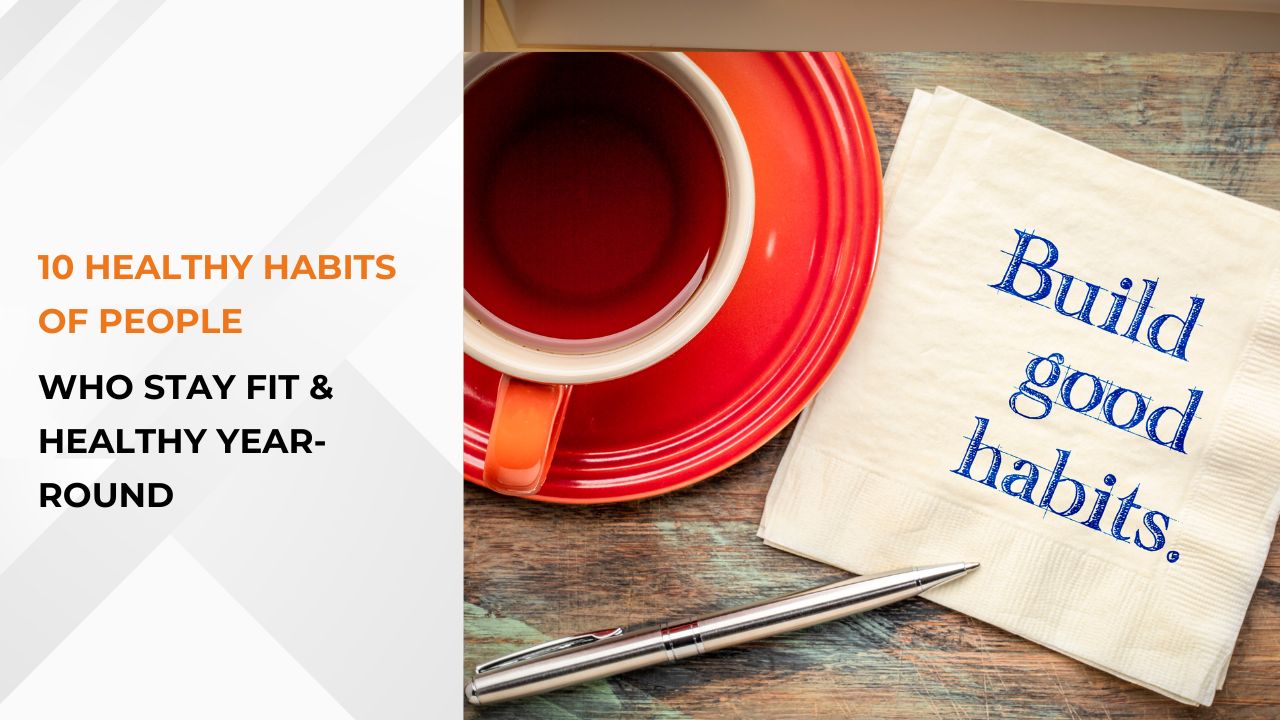Healthy Carbs vs. Bad Carbs: What to Include in Your Diet

Carbohydrates often get a bad reputation, especially when it comes to discussions about weight loss and maintaining a healthy lifestyle. However, all carbs aren’t created equal. Understanding the difference between healthy carbs and bad carbs can make a significant impact on your overall health and fitness goals. In this blog, we will explore what healthy carbs are, how they differ from bad carbs, and how to make smarter choices when it comes to incorporating them into your diet.
What Are Carbohydrates?
Firstly, carbohydrates are one of the three macronutrients that our bodies need to function properly, alongside proteins and fats. They are the body’s primary source of energy, breaking down into glucose (sugar) and providing fuel for our cells, tissues, and organs. A wide range of foods, from fruits and vegetables to bread and pasta contain carbohydrates.
These are three types of carbs:
- Sugars: Simple carbs found in fruits, vegetables, milk, and processed foods.
- Starches: Complex carbs found in grains, legumes, and starchy vegetables like potatoes.
- Fiber: A type of carb that the body cannot digest, found in whole grains, fruits, vegetables, and legumes.
However, the distinction between healthy carbs and bad carbs lies in how these carbohydrates affect your body and overall health.
Understanding Healthy Carbs
Healthy carbs are typically complex carbohydrates that provide a slow and steady release of energy. They are rich in fiber, vitamins, minerals, and other essential nutrients that support your overall health. Here are some characteristics of healthy carbs:
- High in Fiber: Fiber is crucial for digestive health, helping to regulate blood sugar levels, reduce cholesterol, and keep you feeling full longer. Foods rich in fiber include whole grains, fruits, vegetables, and legumes.
- Low Glycemic Index (GI): The glycemic index measures how quickly a carbohydrate-containing food raises blood sugar levels. Healthy carbs usually have a low GI, meaning they release glucose more slowly and steadily. This helps prevent spikes in blood sugar and energy crashes. Examples include oats, quinoa, and most vegetables.
- Nutrient-Dense: Healthy carbs are packed with essential nutrients like vitamins, minerals, and antioxidants. These nutrients are vital for maintaining good health and preventing chronic diseases. Whole foods like fruits, vegetables, and whole grains are excellent sources of nutrient-dense carbs.
- Minimal Processing: Healthy carbs are whole or minimally processed. They retain most of their natural nutrients and fiber. Processed carbs include brown rice, whole-wheat bread, and fresh fruits and vegetables.
Sources of Healthy Carbs
Incorporating healthy carbs into your diet is essential for maintaining energy levels and supporting overall health. Here are some excellent sources of healthy carbs:
- Whole Grains: Brown rice, quinoa, barley, oats, and whole-wheat products are rich in fiber and essential nutrients.
- Fruits: Apples, berries, bananas, oranges, and pears are not only high in fiber but also provide vitamins, minerals, and antioxidants.
- Vegetables: Leafy greens, carrots, sweet potatoes, and broccoli are low in calories but high in vitamins, minerals, and fiber.
- Legumes: Beans, lentils, chickpeas, and peas are excellent sources of plant-based protein, fiber, and complex carbohydrates.
- Nuts and Seeds: Almonds, chia seeds, flaxseeds, and walnuts offer a good mix of healthy fats, protein, and fiber, making them a great addition to your diet.
What Are Bad Carbs?
Bad carbs are often called simple or refined carbohydrates. These carbs can lead to negative health effects when consumed in excess. These carbs are typically low in nutritional value and high in sugar. The body quickly digests them, leading to rapid spikes and crashes in blood sugar levels. Here are some characteristics of bad carbs:
- High Glycemic Index (GI): Foods with a high GI cause rapid increases in blood sugar levels, which can lead to energy crashes and increased hunger shortly after eating. Examples include white bread, sugary cereals, and candy.
- Low in Nutrients: Bad carbs are often stripped of their natural nutrients during processing. This leaves them with little to no fiber, vitamins, or minerals. White flour, white rice, and many packaged snacks are examples of nutrient-poor carbs.
- High in Added Sugars: Bad carbs, with added sugars, contribute to weight gain, insulin resistance, and increased risk of chronic diseases like type 2 diabetes and heart disease. Soft drinks, pastries, and many processed foods fall into this category.
- Highly Processed: Processed foods contain bad carbs that are designed for convenience but lack nutritional value. These foods are often loaded with preservatives, artificial flavors, and unhealthy fats.
Sources of Bad Carbs
Now, to maintain a healthy diet, it’s important to limit your intake of bad carbs. Here are some common sources of bad carbs that you should try to avoid or consume in moderation:
- Sugary Beverages: Soft drinks, energy drinks, and sweetened coffee or tea provide little to no nutritional value.
- White Bread and Pastries: White Bread and pastries are made from refined flour. This makes it lack its natural fiber and nutrients, leading to rapid blood sugar spikes.
- Candy and Sweets: High in sugar and often containing unhealthy fats, candies, cookies, and other sweets contribute to weight gain and other health issues.
- Processed Snacks: Chips, crackers, and other packaged snacks high in refined carbs, unhealthy fats, and artificial ingredients.
- Fast Food: Same as processed snacks, many fast food items, such as burgers, fries, and pizza, have unhealthy carbs and excessive calories.
The Impact of Bad Carbs on Health
Now, here are some of the potential negative effects:
- Weight Gain: Bad carbs are often high in calories and low in fiber, leading to overeating and weight gain. The rapid spikes and crashes in blood sugar can also increase hunger and cravings.
- Increased Risk of Chronic Diseases: People with diets high in bad carbs and those with excessive added sugars have an increased risk of chronic conditions, such as type 2 diabetes, heart disease, and metabolic syndrome.
- Poor Digestive Health: Low-fiber diets, often high in bad carbs, can lead to digestive issues such as constipation and a higher risk of gastrointestinal disorders.
- Mood and Energy Swings: The rapid changes in blood sugar levels caused by bad carbs can result in mood swings, fatigue, and difficulty concentrating.
Making Healthier Carb Choices
Finally, choosing healthy carbs over bad carbs doesn’t have to be complicated. Here are some simple tips to help you make better carb choices:
- Opt for Whole Grains: First, choose whole-grain versions of bread, pasta, and rice instead of refined options. Look for labels that list “whole” as the first ingredient.
- Limit Sugary Foods and Drinks: Next, reduce your intake of sugary snacks, desserts, and beverages. Instead, satisfy your sweet tooth with fresh fruit.
- Read Labels: Thirdly, when shopping for packaged foods, check the nutrition label for added sugars and refined carbs. Aim for products with higher fiber content and fewer added sugars.
- Cook at Home: Preparing meals at home allows you to control the ingredients and choose healthier carbs. Incorporate more vegetables, legumes, and whole grains into your dishes.
- Balance Your Plate: Ensure that your meals are balanced with a variety of nutrients. Include a mix of healthy carbs, lean proteins, and healthy fats to create a satisfying and nutritious meal.
Also Read: 10 Essential Stretching Exercises to Improve Flexibility and Prevent Injury
Conclusion
Finally, understanding the difference between healthy carbs and bad carbs is essential for making informed dietary choices. By focusing on whole, nutrient-dense foods and minimizing the intake of processed and refined carbs, you can support your overall health, maintain steady energy levels, and reduce the risk of chronic diseases. Remember, all carbs aren’t equal, so choose wisely and enjoy the benefits of a balanced diet.

